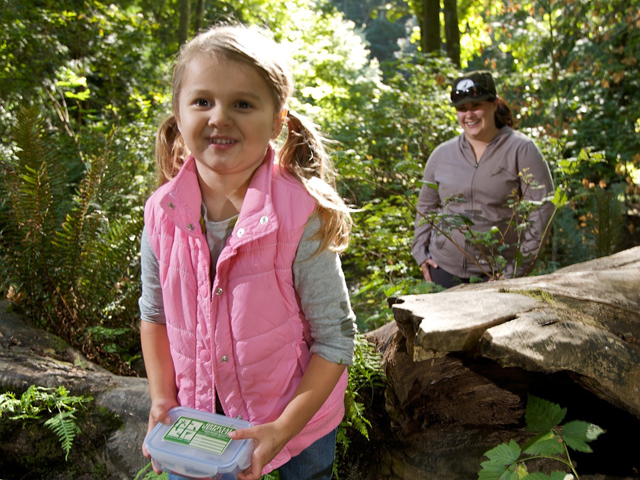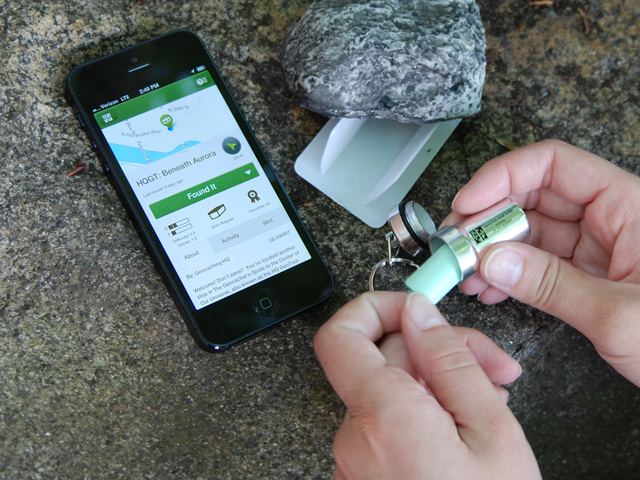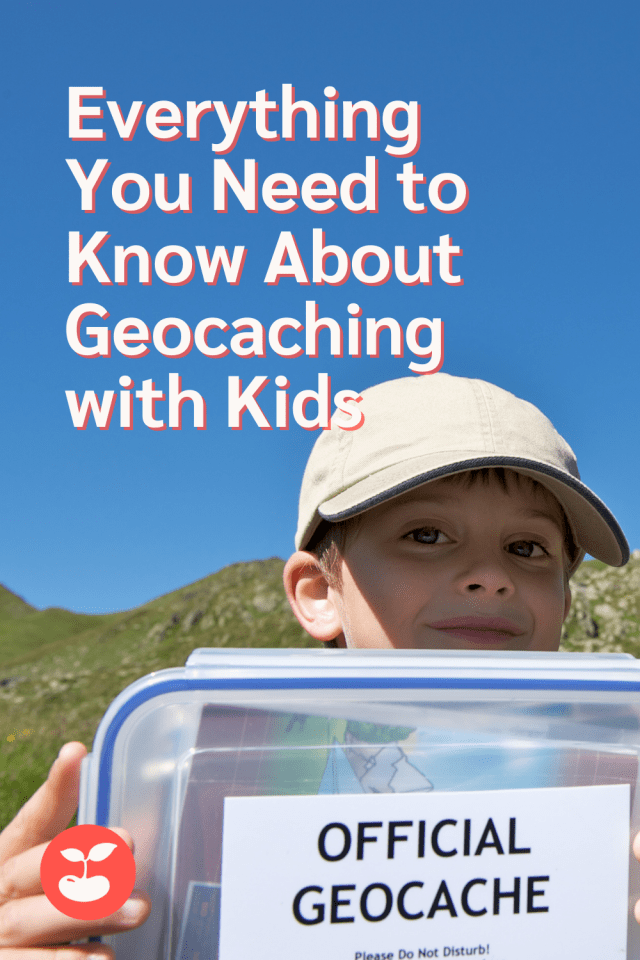You’ve walked by that newspaper stand hundreds of times, but did you know there’s a treasure box tucked under it? Millions of hidden “caches” (containers) worldwide are hiding, waiting for discovery. This worldwide outdoor treasure hunt is called Geocaching, and it’s an exciting—and totally addicting—family adventure. We’ve got a how-to guide that’ll tell you everything you need to know, so keep reading and get ready for fun!
What’s Geocaching?
Originally called “The GPS Stash Hunt” in 2000, founder Dave Ulmer was the first person to start a treasure hunt using GPS coordinates. His idea: “take some stuff, leave some stuff.” Two people on the internet found his container, and the geocaching game was born. Now, over 2 million caches are hidden around the world and over 6 million people are on the hunt to find them.

Geocaching is for everyone, everywhere
Geocaching is a whole family adventure that can be done anywhere from near your home to around the world you travel. Kids as young as toddlers can help find caches, but it’s absolutely perfect for kids 5+ who’ll also get educational value out of the finds, locations, and creating a log of where they have been.
How to get started:
1. Download the free app from geocaching.com to get the GPS, log, and hints on cache locations. With the app open, you’ll quickly see the nearest caches to you. Follow the arrow until it gets within twenty feet, then put it away and start looking around. Upgrade the app (currently $9.99 for three months or $29.99 for a year) to unlock premium-only caches, advanced mapping, custom searches and more.
2. When you’ve found your cache (yipee!), write your geocacher name—this is a cool handle you’ll use for every find you make — and the date on the log in the container. You can keep anything you like from the stash, as long as you replace it with something of equal or greater value. Log the find on your app (include a picture or any notes you’d like to put in for future finders), and put the box back where you found it.
3. Once you get the feel of standard geocaching, try some of the more advanced treasure hunts. Multi-Caches tend to have higher quality treasures, and you have to go through a number of stops for clues to find them. Puzzle Caches also lead you through multiple stops, but you have to solve a puzzle to figure out where to go next.
Want to hide your own caches? You totally can! Just follow the rules of setting one up.

Define “treasure”—what’s inside?
“Treasure” is a subjective word, isn’t it? Especially to toddlers who collect things like dirty shoe strings and empty snail shells. Caches are categorized by size—you could be looking for anything from a large shoebox to a small fake rock with a secret compartment. Inside you’ll find things like coupons, stickers, crayons, lotto tickets, and shell necklaces—the mystery is part of the fun! But the real “treasure”, according to long-time geocacher Larry Hazeltine of Colorado Springs (who has found over 3,700 treasures with his four kids!), isn’t the prize itself. “It’s all the cool places you’ll see while hunting—parks, historic buildings, amazing views—the geocaches are just what bring you there.”

Tips and tricks before you go:
• For your first few times out, search for “regular” size caches, as they’re easier to spot than smaller ones (you can see the size in the cache description).
• Bring a pen or pencil! Some caches don’t have anything to write your name on the log with.
• The best cache trades are unique and personalized to you or the place it’s hidden.
• If you’re stuck on a cache, email the cache owner for guidance or help.
For more information and to get started, visit geocaching.com.
— Shannon Guyton
All images courtesy of geocaching.com,Featured image: Tim Gouw via Unsplash
RELATED STORIES:
Why You’ll Dig Geocaching (& 14 Stunning Destinations to Get Your Start)
Free & Easy At-Home Scavenger Hunt Printables for Kids












